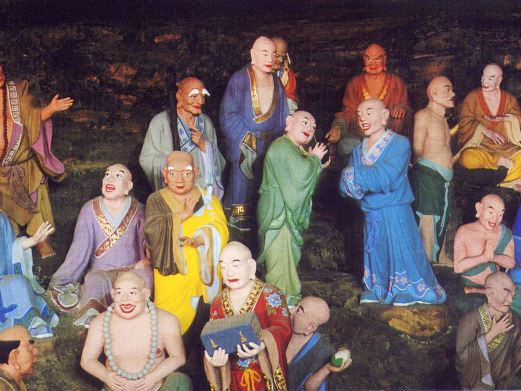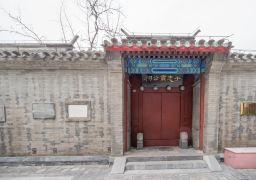The title ‘Cave of Arhats’ was inscribed by the renowned Mr. Jin Yong. This is a natural cave, named ‘Panhu Cave’ due to the cliff at the entrance resembling a reclining tiger. To inherit and promote the grotto art of Xinchang’s Great Buddha Temple, this natural cave has been processed and expanded, and 500 Arhats of varying heights from 1.1 to 1.3 meters have been constructed according to the terrain, now known as the ‘Cave of Arhats’.
Inside the Cave of Arhats, there are 500 Arhats along with the statues of Guanyin of the Dripping Spring, Good Talent Child, Dragon Girl, and the enlightened monk, totaling 504 statues. They are derived from the Buddhist scripture of 500 Arhats paying homage to Guanyin, expressing themes of harmony, equality, democracy, and freedom. The 500 Arhats are depicted with exaggerated and humorous expressions, endowed with a sense of movement and change. Every detail, from the gestures, gazes, clothing, and props of the figures, is meticulously realistic. They are no longer the rigid, solemn images of the past, nor the unapproachable, majestic visages of divinity, but have become approachable, lovable, and respectable mortal appearances, making one feel as if they are facing real, living people.

There is also a statue of the former abbot of the Great Buddha Temple, the enlightened monk. Born in 1920, he took refuge in Buddhism at the age of 14, extensively studied Buddhist scriptures, and was proficient in Buddhist teachings. He lectured on Buddhist scriptures both domestically and internationally on multiple occasions. There are various tales associated with him, such as the story of 500 geese and the tale of 500 bandits, with numerous interpretations.
The Cave of Five Hundred Arhats
The title ‘Cave of Arhats’ was inscribed by the renowned Mr. Jin Yong. This is a natural[...]









